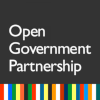Involvement of stakeholders(Government, consumers, CSOs, utility service providers) in water and sanitation governance (GHTML0001)
Overview
At-a-Glance
Action Plan: Action plan – Tamale, Ghana, 2025 – 2028
Inception Report: Not available
Commitment Start: Jun 2025
Commitment End: Oct 2028
Institutions involved:
- Tamale metropolitan Assembly
- Northern Accelerated intervention for Development
- University For Development Planning
- OXFAM GHANA
- GDCA
Primary Policy Area:
Primary Sector:
OGP Value:
- Civic Participation
- Access to information
- Public Accountability
- Technology and Innovation for Transparency and Accountability
Description
Commitment ID
GHTML0001
Commitment Title
Involvement of stakeholders(Government, consumers, CSOs, utility service providers) in water and sanitation governance
Problem
The residents of the Tamale metropolitan area constantly face challenges in accessing quality water, especially for domestic purposes. Women, children and people living with disabilities (PWDs) are the hardest hit in this regards.
The production capacity of Ghana Water Company in the metropolis stands at 45,000 cubic meters per day, while the demand is 90,000 cubic meters per day(GNA, March 4 2025).
The dams in the Peri-Urban communities easily dry up, making the inhabitants struggle for the nonexistent source of water for domestic use and for animals to drink.
On sanitation, it is estimated that about 810 tonnes of waste are generated a day in the Greater Tamale, and out of this, 216 tonnes are hauled daily. This leaves a backlog of 594 tonnes uncollected a day resulting in littering, heaping of waste, and overflowing of skips with waste in the metropolis, most especially in the low-class residential and peri-urban areas(EHSU, TaMA).
Poor attitude towards environmental sanitation, such as littering and putting waste in the drains are major cause of choked drains with solid waste. This situation not only worsens the environmental sanitation conditions but threatens the lives of residents, especially women, children, and PWDs. Poor state of sanitation in the metropolis contributes to various infectious diseases such as malaria, cholera, typhoid, and diarrhea.
The above-mentioned issues are largely due to a lack of broader public participation in these sectors
Status quo
About 50% of the residents of the Greater Tamale do not have access to a quality water supply. The government has prioritized water and sanitation, and plans are far advanced in dealing with the issues in the northern sector.
Action
Involvement of key stakeholders (government, consumers, utility service providers, PWDs) in water and sanitation governance. The project will provide the needed platform for their active participation and offer appropriate remedies to the problems for effective delivery of prompt and satisfactory water and sanitation services.
How will the commitment contribute to solving the public problem described above?
Outputs:
- The citizens and other stakeholders will be empowered through education and training workshops to participate in water and sanitation delivery
- Effective collaboration with service providers, policy makers, and policy implementers in ensuring effective and regular portable water supply and good sanitation delivery is facilitated
- Regular stakeholder meetings with the service providers and policy implementers to address the challenges are established
- Water bodies in the Peri-Urban communities are reconstructed and planting trees around them, as well as addressing Climate Change, are protected and conserved
- Effective waste collection, segregation, management, and recycling to protect the citizens against environmental diseases and address climate change is established
Outcomes:
- Citizens participate in the education of water and sanitation delivery
- The communities collaborate with service providers, policy makers and policy implementers in portable water supply and sanitation delivery
- Communities participate in regular stakeholder meetings with service providers and policy implementers
- The communities have regular source of water
What long-term goal as identified in your Open Government Strategy does this commitment relate to?
Ensuring regular and uninterrupted water supply and effective sanitation management through broader citizens' participation and advocacy.
Primary Policy Area
Beneficial Ownership, Civic Space
Primary Sector
Aid, Environment & Climate, Security and Public Safety, Water, Sanitation, and Hygiene
What OGP value is this commitment relevant to?
| Civic Participation | This commitment requires public participation for effective service delivery. |
| Access to information | The communities should have access to service providers and have discussions with them on the issues of water and sanitation |
| Public Accountability | The public demand accountability on the services provided |
| Technology and Innovation for Transparency and Accountability | There should be easy and quick access to the services and payment of bills |
